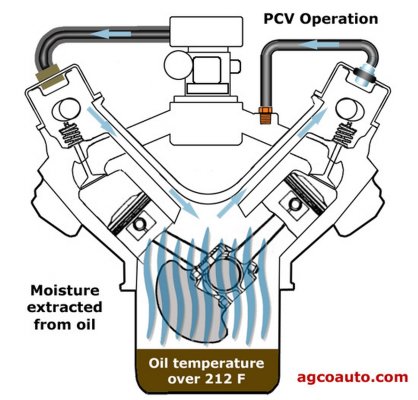BlaineBug
Full Access Member
The presenter in this clip mentions that the passenger side PCV system does the "majority" of the heavy lifting, necessitating the need for 2 cans. Truth or sales gimmick??
Last edited:
Disclaimer: Links on this page pointing to Amazon, eBay and other sites may include affiliate code. If you click them and make a purchase, we may earn a small commission.
They are trying to sale something you don't need on the (clean) passenger side.
The presenter in this clip mentions that the passenger side PCV system does the "majority" of the heavy lifting, negating the need for 2 cans. Truth or sales gimmick??

Thank you for the comments. I believe I was getting confused now as I was mistaking the PCV tube from the air intake. This is the incorrect PCV tube that I need to connect to. I'll follow up more later when I have my can installed, as I just received it yesterday.They are trying to sale something you don't need on the (clean) passenger side.
PVC system air flow on the passenger side is clean filtered air via plumbing and flow "INTO" the passenger side valve cover. No catch can needed on that side.
Where the catch can is needed is on the driverside/dirty side. The passenger side filtered air becomes dirty air because of blowby gases, and oil (not good) are being sucked "FROM" the driverside valve cover and into the intake manifold. Our engines are not suppose to burn oil.
The original valve covers on our 2007 to 2011 LS engines were poorly designed and allowed too much oil to be sucked out of the engine via the passenger side valve cover (PVC) thus leaving deposits on the intake valves, combustion chambers, pistons, and sometime even sticking the piston rings (my engine).
So GM around 2014 came up with new designed driverside valve covers, for years 07 & 08 = pt# 12570427; and for years 09-11 = pt# 12642655 to minimize the oil being sucked out of the engine.
https://f01.justanswer.com/ebrock63...il+Consumption,+MIL+ON,+Engine+Runs+Rough.pdf
View attachment 415293
How are your plastic fittings holding up? Mine has plastic as well (less than ideal) but cheap = cheap. I just did it for fun, really.I mounted my $25 catch can at the hood gas spring lower mount, between the power brake booster and the driverside valve cover.
No regrets.
View attachment 415420
5 years and no problemHow are your plastic fittings holding up? Mine has plastic as well (less than ideal) but cheap = cheap. I just did it for fun, really.
Absolutely more condensate collected in cold weatherI have the same one as you, and I haven't had any oil/water collected in the last 2 oil changes I've done. I pulled it apart, and it wasn't the ball-valve seized. It was just empty.
When I first installed it, I'd get water/sludge in there. I wonder if it's something that's a non-issue in the warm months, but will return during the cold winter weather.
Edit: the bracket is straight garbage, but I've been too lazy to improve it.
That's certainly true for the overwhelming majority of street operation, but at high-load or full-throttle operation when there's the combination of low/no vacuum and increased blowby, crankcase vapor will flow out of that intake side. Whether it's worth it to install a catch can on that side will depend on if you see evidence of anything other than a minor amount of oil in that tube or the intake tract after a stint of high-load or full-throttle operation.They are trying to sale something you don't need on the (clean) passenger side.
PVC system air flow on the passenger side is clean filtered air via plumbing and flow "INTO" the passenger side valve cover. No catch can needed on that side.
